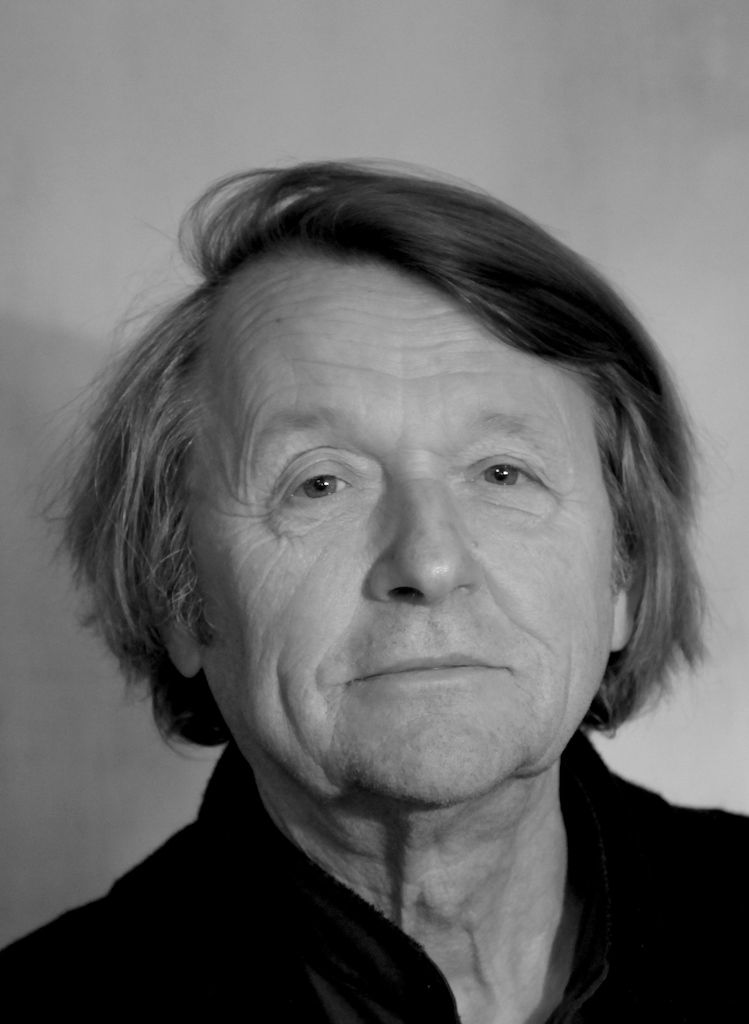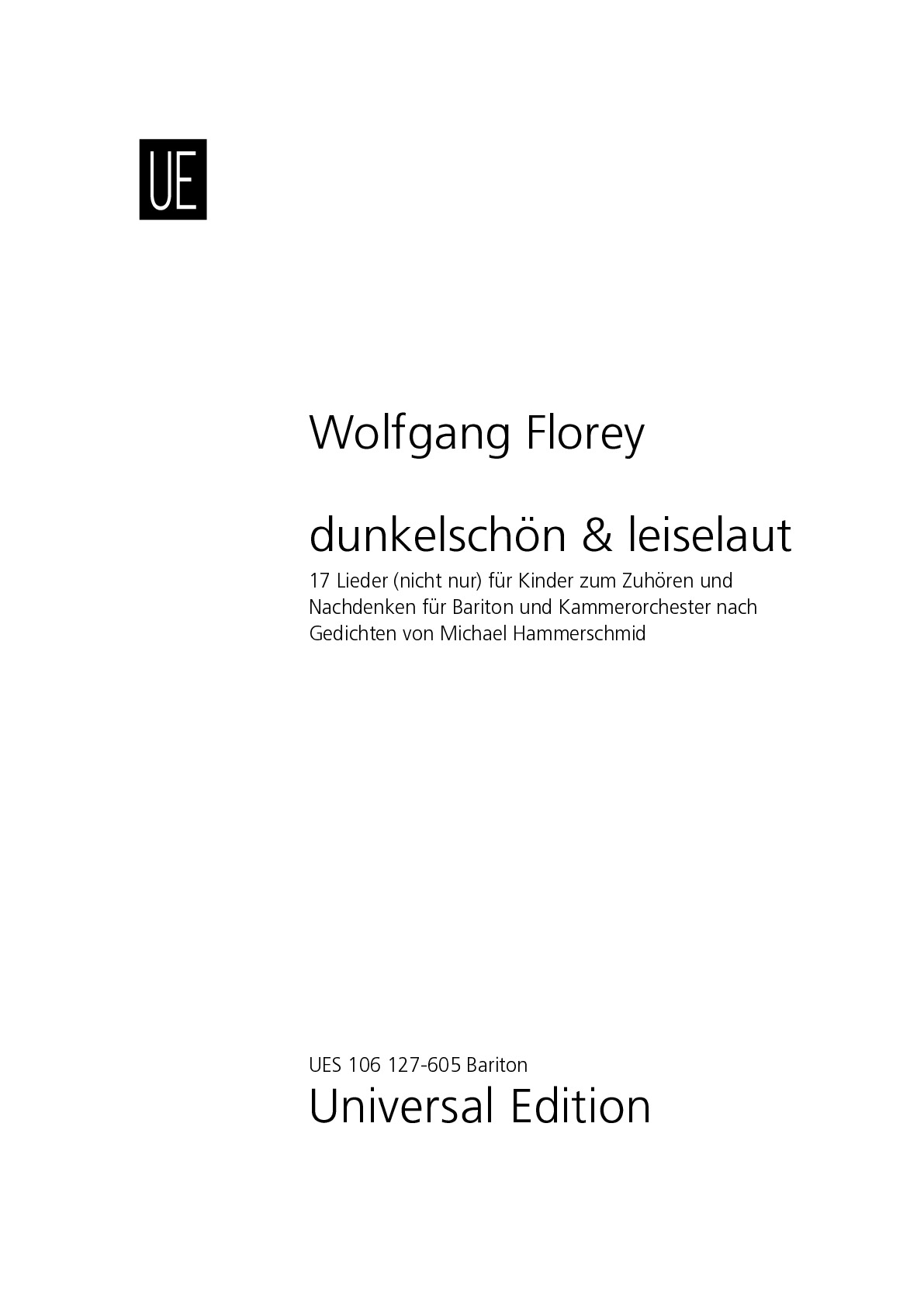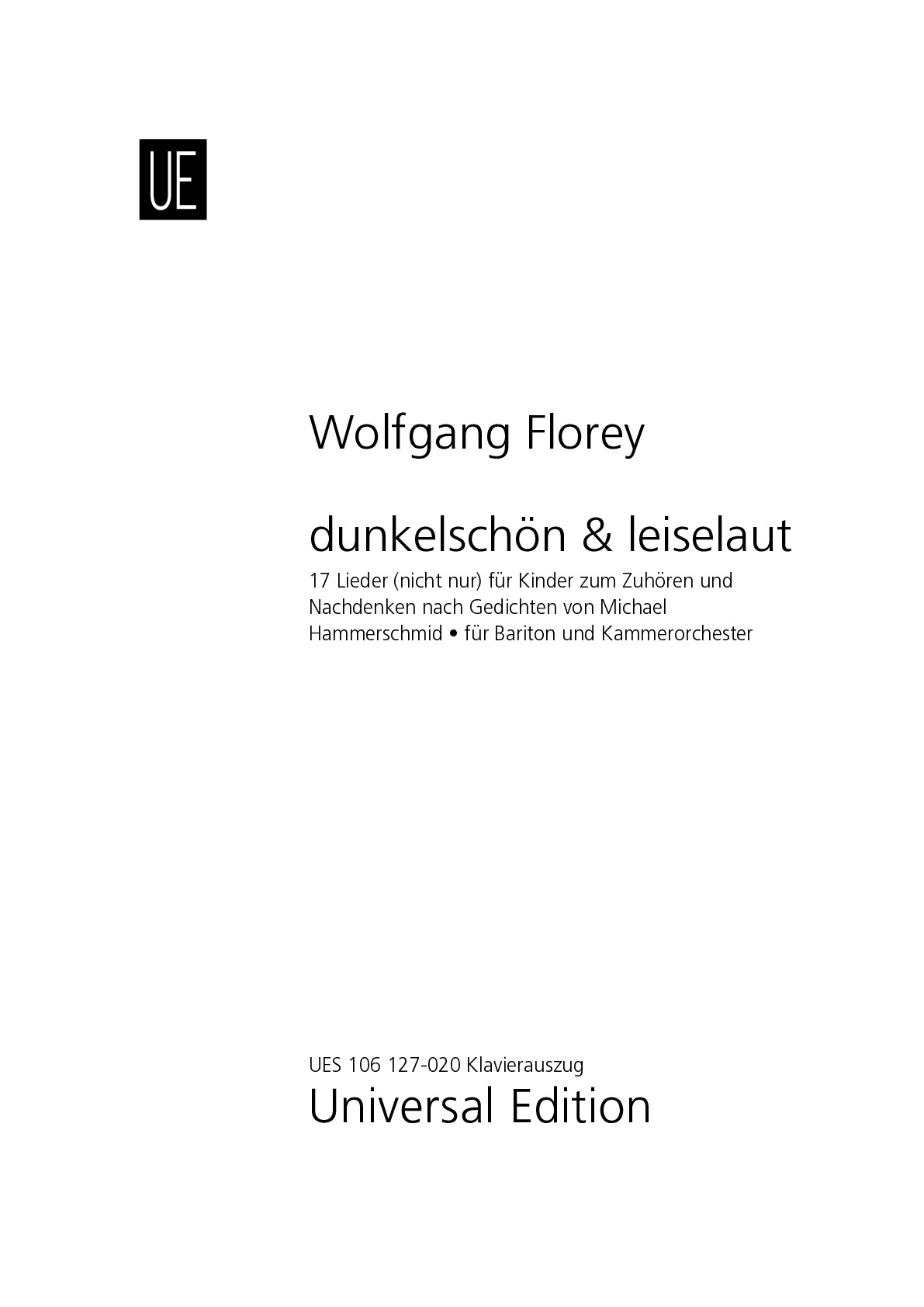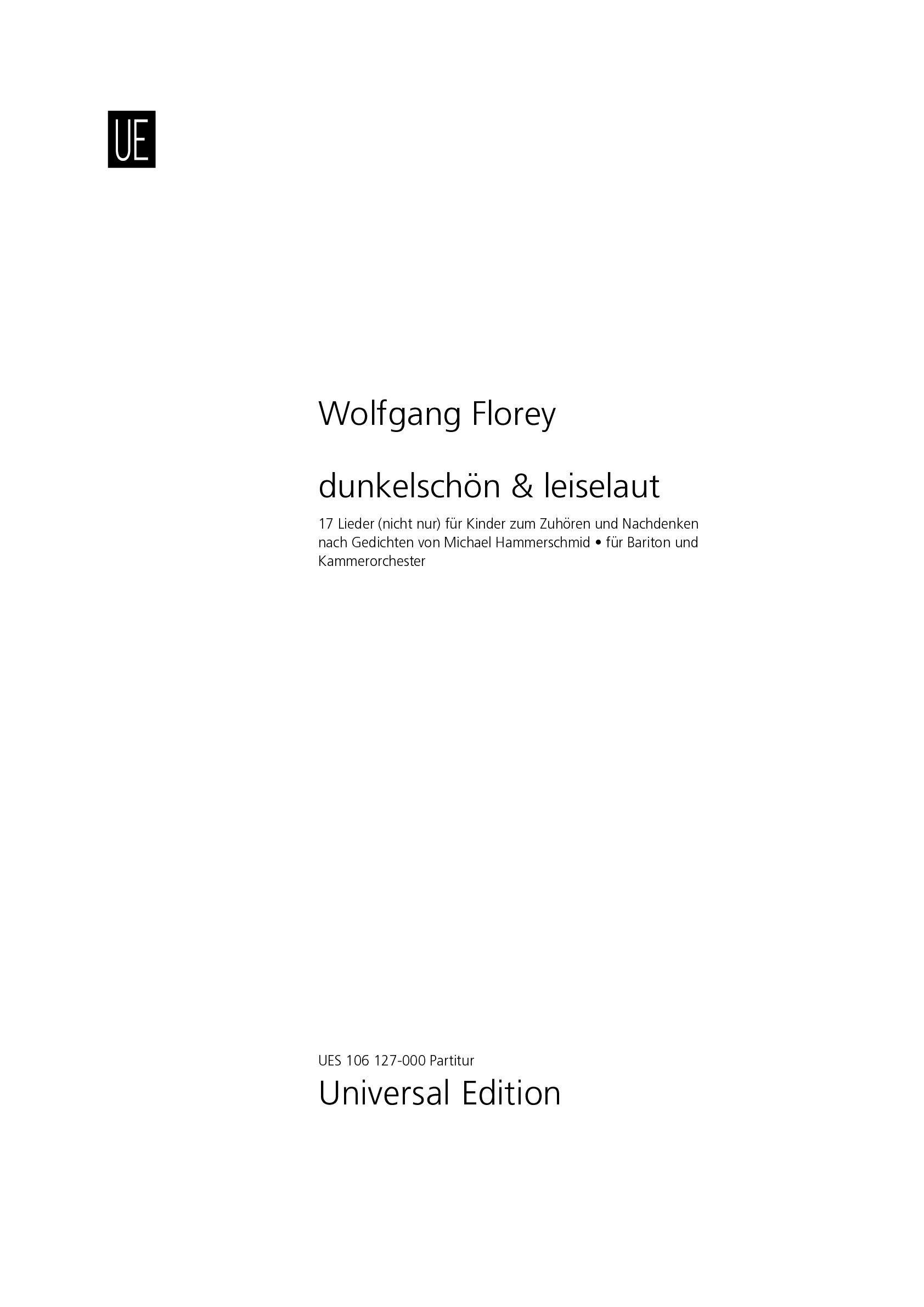

Wolfgang Florey
dunkelschön & leiselaut
Short instrumentation: 1 0 2 1 - 2 1 0 1, timp, perc(3), str
Duration: 50'
Solos:
baritone
Instrumentation details:
flute (+alto fl, picc)
clarinet in Bb (+cl(Eb))
clarinet in Bb (+cb.cl(Bb))
bassoon
horn in F
horn in F
trumpet in Bb
bass tuba
timpani
drum set (3 players)
violin I (5 players)
violin II (4 players)
viola (3 players)
violoncello (2 players)
double bass
dunkelschön & leiselaut
Printed/Digital
Translation, reprints and more

Wolfgang Florey
Bariton (dunkelschön & leiselaut)Type: Solostimme(n)


Sample pages
Work introduction
dunkelschön & leiselaut, as the two siblings poetry and music are called here, want to encourage children, but also adults, to listen, to promote the conscious perception of music and to stimulate reflection on what is sung and what is played. Because: Listening also needs to be learnt. It requires great attention. And this is not to be had without preconditions. A special atmosphere and a quiet environment are necessary. In addition, curiosity and the satisfaction of curiosity are a good prerequisite.
Words are aimed at the mind and music moves the heart. But when music and poetry have become an inseparable whole, they meet the soul itself when they become a song. The soul needs education just as much as the human intellect. This is easily overlooked. Yes, soul formation seems to many today to be conceptually antiquated and completely superfluous. But nobody can seriously want to breed people whose minds have been digitally trained but whose souls have atrophied. Yet there are extremely powerful forces that seem to be pursuing precisely this goal. The oversaturation of our society with digital devices necessarily means that we are slowly but surely losing the experience of our immediacy. The ability to pay attention is being successively restricted with every further step into our cybernetic future. But beware: attention is the prerequisite for all conscious perception. And this in turn is fundamental for our human interaction. It would appear that today's pedagogy hardly puts up any resistance to the tendency towards a constant reduction in attention span that can be observed everywhere. On the contrary: in many cases it makes this fact the basis of its methodological premises. Simply calling this fatal is really not enough. The promotion of computerised pedagogy is not only an educational disaster, but also leads straight to psychological and social misery. And compliant educationalists who speak out in favour of this development are nothing more than pioneers of a dystopian society.
With this song cycle, the composer wants to provide all those who design concert programmes for young people and who take their educational and artistic mission seriously with material that gives them the opportunity to bring something resistant to the stage in this sense. The colourful range of instruments aims to prove that music is not only perceived with the ears, but also with the eyes. Variety and excitement are elements that keep attention alert. The composer believes that this cycle could set an example and make it possible to experience that a lively performance of music and poetry can become an experience and nourish the memory.
And all this could promote the realisation that such aesthetic overwhelming of the child's soul is of great importance for human development.
